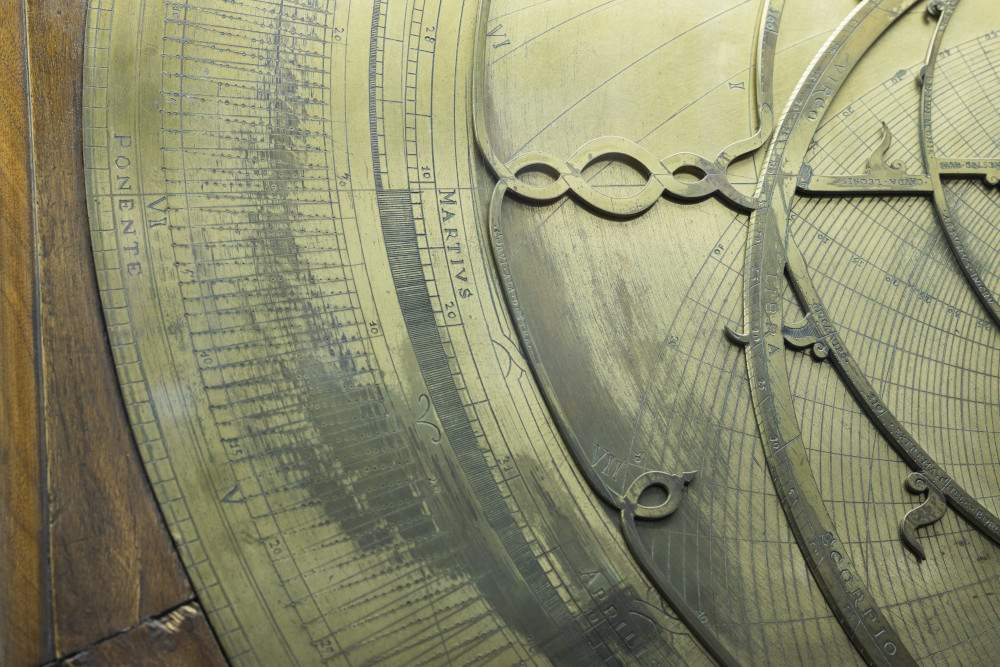From Oct. 21, 2023, to Jan. 29, 2024, the Curia Iulia in the Roman Forum will host the exhibition Copernicus and the Revolution of the World, promoted and realized by the Colosseum Archaeological Park and curated by Alfonsina Russo, Jurek Miziolek, Francesca Ceci and Daniele Fortuna. Produced by the Colosseum Archaeological Park in collaboration with the University of Warsaw, the Jagiellonian University of Krakow and the INAF Astronomical and Copernican Museum in Rome, the exhibition is part of the celebrations of the 550th anniversary of the birth of Nicholas Copernicus (1473-1543), the Polish astronomer and mathematician who forever changed the understanding of the cosmos with his revolutionary vision that placed the sun at the center of the universe.
The aim of the exhibition is to explore the world discovered with the Copernican revolution, its ancient roots, solar iconography, Copernicus’ stay in Rome in the 1500s and the broad influence of the heliocentric theory. Italy played a key role in the education of Copernicus, who, after receiving an education in Krakow, studied in several Italian cities, including Bologna, Padua and Ferrara, and spent a significant period in Rome, where he conducted relevant studies and research. On the night of November 5-6, 1500, in fact in Rome, Copernicus observed the lunar eclipse described in Book IV of his De revolutionibus. In the same city Copernicus also gave lectures on mathematics and astronomy, as depicted in 19th-century engravings and paintings, some of which are presented in the exhibition.
The exhibition will be divided into three sections: Copernicus and the Ancient; Copernicus in Italy; Copernicus’ admirers and his legend. Through multimedia projections created by None Collective, the exhibition also aims to be a meeting place between the great astronomer and other genius minds from both antiquity, from Pythagoras to Aristotle, from Aristarchus of Samos to Ptolemy, and the modern period, including Tycho Brahe, Kepler, Galileo and Newton.
The works on display, twenty-three in all, come from fourteen lending museums, including the Musei Capitolini, the Complesso monumentale della Pilotta, the Museo Archeologico Nazionale in Naples, the Museo Galileo in Florence, the Museo Astronomico e Copernicano of the INAF-Osservatorio astronomico in Rome, and the Museum of Stained Glass in Krakow.
The exhibition is accompanied by a booklet in Italian and English with texts by curators Jurek Miziolek and Francesca Ceci.
“On the occasion of the 550th anniversary of the birth of Nicolaus Copernicus, we are happy and proud to celebrate this extraordinary figure who changed the perception of the universe and at the same time strengthen the link between Italy and Poland, the home of the illustrious astronomer,” said Alfonsina Russo, director of the Colosseum Archaeological Park.
The exhibition is included in the Colosseum Archaeological Park entrance fee and can be visited during normal opening hours, Saturday through Monday.
Hours: Until Oct. 28: Saturdays, Sundays and Mondays from 9:30 a.m. to 5 p.m. (last entry at 4:30 p.m.); from Oct. 29 Saturdays, Sundays and Mondays from 9:30 a.m. to 4 p.m. (last entry at 3:30 p.m.).
Photo by Simona Murrone.
 |
| An exhibition in Rome to celebrate the 550th anniversary of the birth of Nicholas Copernicus |
Warning: the translation into English of the original Italian article was created using automatic tools. We undertake to review all articles, but we do not guarantee the total absence of inaccuracies in the translation due to the program. You can find the original by clicking on the ITA button. If you find any mistake,please contact us.